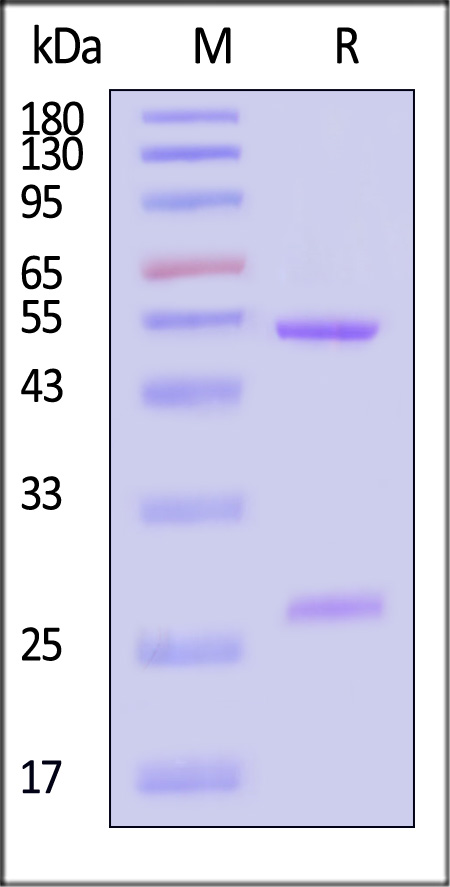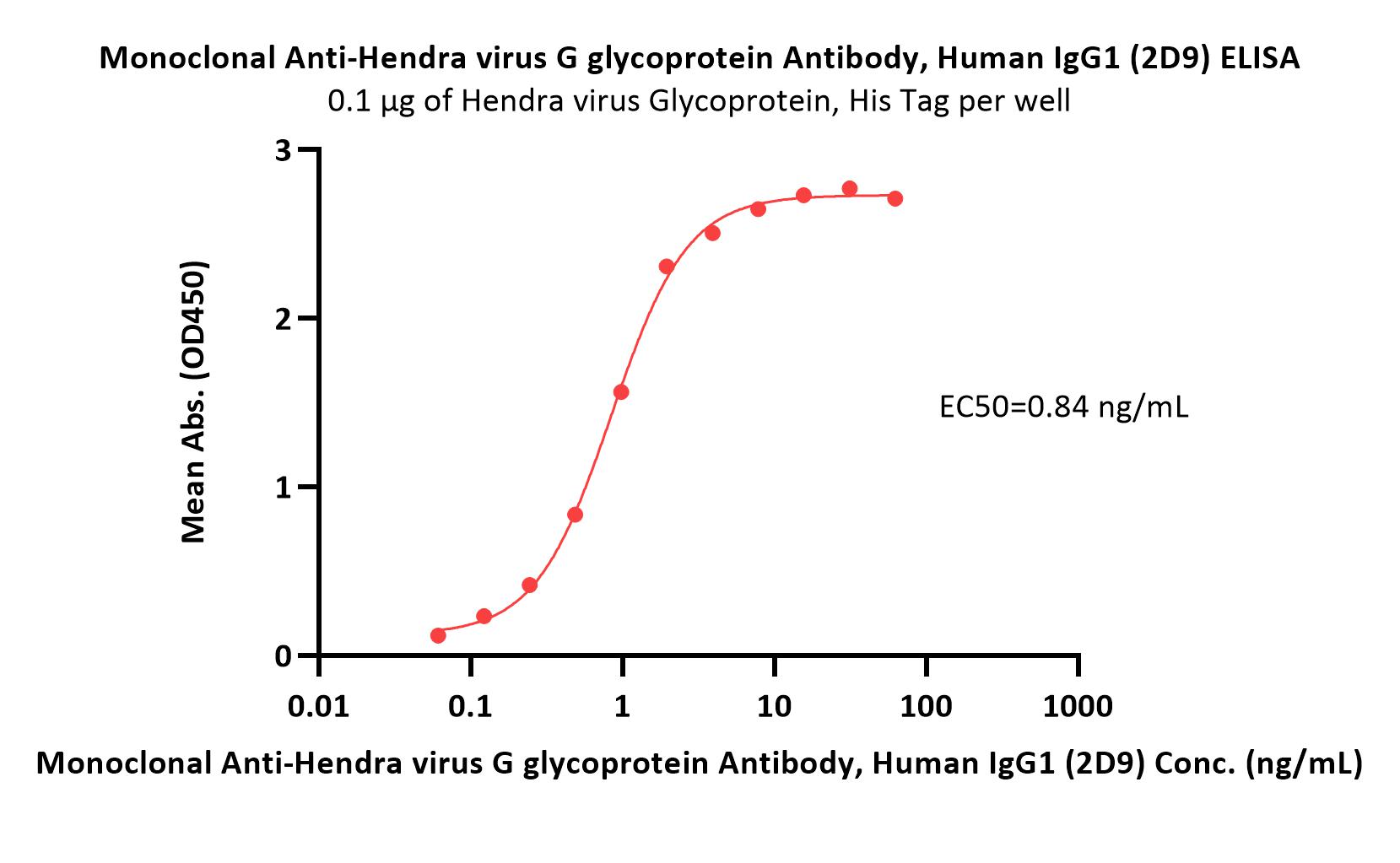Development and Validation of a Differentiating Infected from Vaccinated Animals (DIVA) Enzyme-Linked Immunosorbent Assay (ELISA) Strategy for Distinguishing Between Hendra-Infected and Vaccinated HorsesMcNabb, McMahon, Woube
et alViruses (2025) 17 (3)
Abstract: Hendra virus (HeV) is a bat-borne zoonotic agent which can cause a severe and highly fatal disease and can be transferred from animals to humans. It has caused over 100 deaths in horses since it was discovered in 1994. Four out of seven infected humans have died. Since the release of the HeV vaccine (Equivac® HeV Hendra Virus Vaccine for Horses, Zoetis Australia Pty Ltd., Rhodes, NSW 2138) in Australia, there has been an urgent requirement for a serological test for differentiating infected from vaccinated animals (DIVA). All first-line diagnostic serological assays at the Australian Centre for Disease Preparedness (ACDP) incorporate recombinant HeV soluble G glycoprotein (sG) as the antigen, which is also the only immunogen present in the Equivac® HeV vaccine. Problems therefore arose in that antibody testing results were unable to distinguish between prior vaccination or infection with HeV. This study describes the development of a HeV DIVA ELISA strategy using recombinant sG and HeV nucleoprotein (N), paired with specific monoclonal antibodies in a competition ELISA format. The validation of this assay strategy was performed using a positive cohort of 19 serum samples representing post-infection sera, a negative cohort of 1138 serum samples representing horse sera collected pre-vaccine release and a vaccination cohort of 502 serum samples from horses previously vaccinated with Equivac® HeV vaccine. For the sG glycoprotein, the diagnostic sensitivity (DSe) was 100.0% (95% CI: 99.3-100.0%) and diagnostic specificity (DSp) 99.91% (95% CI: 99.5-100.0%), using a percentage inhibition cut-off value of >36, whereas for the N protein, DSe was 100.0% (95% CI: 82.4-100.0%) and DSp 100.0% (95% CI: 99.7-100.0%), using a percentage inhibition cut-off value of >49. Taken together, these results demonstrate that the HeV DIVA ELISA strategy developed here is now an essential and critical component of the testing algorithm for HeV serology testing in Australia.
Serological and molecular analysis of henipavirus infections in synanthropic fruit bat and rodent populations in the Centre and North regions of Cameroon (2018-2020)Mbu'u, Gontao, Wade
et alBMC Vet Res (2025) 21 (1), 93
Abstract: Bats and rodents have been identified as reservoirs for several highly pathogenic and zoonotic viruses including henipaviruses, a genus within the Paramyxoviridae family. A number of studies have revealed the circulation of henipaviruses at the wildlife-human-livestock interface in Cameroon. In this study, we describe the molecular analysis as well as the development and evaluation of a Bead-based Multiplex Binding Assay (BMBA) using an in-house Indirect Enzyme Linked Immunosorbent Assay (ELISA) to confirm the detection of henipavirus infection in wildlife species.A total of 600 fruit bats and 600 rodents were sampled between March 2018 and June 2020. Samples were analyzed using a semi-nested RT-PCR assay followed by sequencing of the PCR fragments. Transudates (754) were screened for the presence of henipavirus-specific antibodies in a BMBA and confirmed by ELISA using Hendra virus (HeV), Nipah virus (NiV) and Ghana virus (GhV) glycoproteins expressed in Leishmania tarentolae, and commercially available HeV G and NiV G glycoproteins. Henipavirus-specific antibodies were detected in 19/531 (3.6%) bat transudates screened by BMBA and confirmed by ELISA. Seroprevalence rates in the Centre and North Regions were 12/291 (4.1%) and 7/240 (2.9%) respectively. All rodents and shrews were serologically negative. Henipavirus RNA sequences were not detected in any of the samples screened in this work.This study provides further data supporting the circulation of Henipaviruses in fruit bats (Eidolon helvum) which are roosting and reproducing in proximity to human and livestock populations in the Centre and North Regions of Cameroon. This also establishes the first detection of Henipavirus specific antibodies in Eidolon helvum populations in the North Region of Cameroon.© 2025. The Author(s).
Functional assessment of the glycoproteins of a novel Hendra virus variant reveals contrasting fusogenic capacities of the receptor-binding and fusion glycoproteinsMa, Yeo, Lee
et almBio (2025) 16 (2), e0348223
Abstract: A novel Hendra virus (HeV) genotype (HeV genotype 2 [HeV-g2]) was recently isolated from a deceased horse, revealing high-sequence conservation and antigenic similarities with the prototypic strain, HeV-g1. As the receptor-binding (G) and fusion (F) glycoproteins of HeV are essential for mediating viral entry, functional characterization of emerging HeV genotypic variants is key to understanding viral entry mechanisms and broader virus-host co-evolution. We first confirmed that HeV-g2 and HeV-g1 glycoproteins share a close phylogenetic relationship, underscoring HeV-g2's relevance to global health. Our in vitro data showed that HeV-g2 glycoproteins induced cell-cell fusion in human cells, shared receptor tropism with HeV-g1, and cross-reacted with antibodies raised against HeV-g1. Despite these similarities, HeV-g2 glycoproteins yielded reduced syncytia formation compared to HeV-g1. By expressing heterotypic combinations of HeV-g2, HeV-g1, and Nipah virus (NiV) glycoproteins, we found that while HeV-g2 G had strong fusion-promoting abilities, HeV-g2 F consistently displayed hypofusogenic properties. These fusion phenotypes were more closely associated with those observed in the related NiV. Further investigation using HeV-g1 and HeV-g2 glycoprotein chimeras revealed that multiple domains may play roles in modulating these fusion phenotypes. Altogether, our findings may establish intrinsic fusogenic capacities of viral glycoproteins as a potential driver behind the emergence of new henipaviral variants.HeV is a zoonotic pathogen that causes severe disease across various mammalian hosts, including horses and humans. The identification of unrecognized HeV variants, such as HeV-g2, highlights the need to investigate mechanisms that may drive their evolution, transmission, and pathogenicity. Our study reveals that HeV-g2 and HeV-g1 glycoproteins are highly conserved in identity, function, and receptor tropism, yet they differ in their abilities to induce the formation of multinucleated cells (syncytia), which is a potential marker of viral pathogenesis. By using heterotypic combinations of HeV-g2 with either HeV-g1 or NiV glycoproteins, as well as chimeric HeV-g1/HeV-g2 glycoproteins, we demonstrate that the differences in syncytial formation can be attributed to the intrinsic fusogenic capacities of each glycoprotein. Our data indicate that HeV-g2 glycoproteins have fusion phenotypes closely related to those of NiV and that fusion promotion may be a crucial factor driving the emergence of new henipaviral variants.
Establishing an immune correlate of protection for Nipah virus in nonhuman primatesLeyva-Grado, Promeneur, Agans
et alNPJ Vaccines (2024) 9 (1), 244
Abstract: The limited but recurrent outbreaks of the zoonotic Nipah virus (NiV) infection in humans, its high fatality rate, and the potential virus transmission from human to human make NiV a concerning threat with pandemic potential. There are no licensed vaccines to prevent infection and disease. A recombinant Hendra virus soluble G glycoprotein vaccine (HeV-sG-V) candidate was recently tested in a Phase I clinical trial. Because NiV outbreaks are sporadic, and with a few cases, licensing will likely require an alternate regulatory licensing pathway. Therefore, determining a reliable vaccine correlate of protection (CoP) will be critical. We assessed the immune responses elicited by HeV-sG-V in African Green monkeys and its relationship with protection from a NiV challenge. Data revealed values of specific binding and neutralizing antibody titers that predicted survival and allowed us to establish a mechanistic CoP for NiV Bangladesh and Malaysia strains.© 2024. The Author(s).


























































 膜杰作
膜杰作 Star Staining
Star Staining















